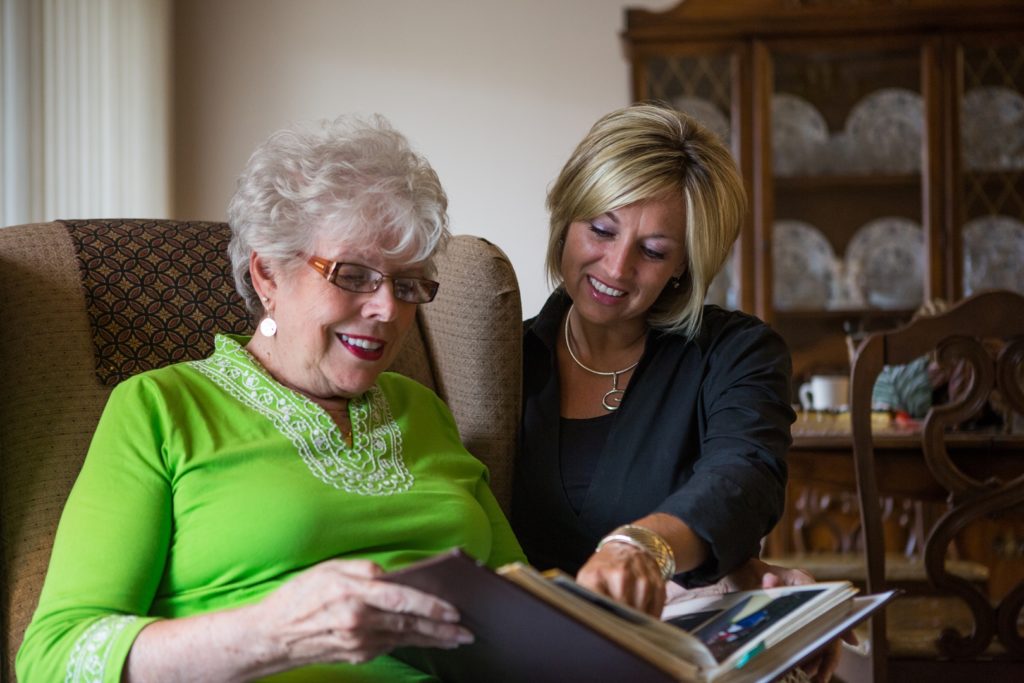Have you ever wondered why the intent of your message was not received well by another?

Do you ever feel that you and a loved one are on different pages of a book, or even in two different books trying to read through the lines to find each other?
Communication is a vital piece of human interaction. Think about the vast array of communication you can have when face to face with another individual. The human brain is an amazing system that, when malfunctioning, can make communication with another drastically different from what we perceive as “normal”.
This is especially true when you are communicating with a loved one living with dementia. Due to brain changes, a person with dementia begins to experience the world drastically different. Their ability to send, receive, and encode messages through communication is impaired. This creates feelings of frustration, anger, and sadness, just to name a few.
How can we decode the messages our loved one is trying to send and enjoy communication again as we have for so many years?
How can we code our message so that we can successfully express what we are intending?
Modifying your viewpoint related to communication is the key to coding and decoding messages for more meaningful communication through all stages of dementia. The first step is shifting your view from what you want or need out of the interaction to focusing solely on what your loved one is wanting or needing.
Imagine if you were walking down the street and a familiar face, yet someone you couldn’t necessarily name, approached you and started speaking in a different language. Imagine they are speaking in a manner that lets you know they desperately needed to tell you something important or wanted your help.
You can tell by their body language, behavior, and other non-verbal cues that they are trying to tell you something important. Would you feel comfortable with this interaction? How would you react? What could that person do non-verbally to help you understand and feel more comfortable with the interaction you are having?
To be a person living with dementia, the interaction described here is all too relatable. Often, we are in a hurry trying to get our message across without considering how what we are saying is being understood or received. Placing yourself in another person’s shoes can help you modify your viewpoint and communicate more effectively.
Adjustments to your voice, including tone, inflection, and rate can help you send a message with the emotion needed to code your message appropriately and improve understanding. At times, simply slowing down and allowing time for the person to process and respond to what you are saying is the most important thing. The words you use can be adjusted, i.e. more words, fewer words, or a change in the complexity of words used, to help our brain reframe understanding.
Often how you communicate non-verbally, through your body language including gestures, facial expressions, posture, and position in space, is of more importance than the words you use. Adjustments to non-verbal cues can help to improve feelings of comfort for the person receiving your message.
To improve communication, you must first develop personal awareness of your communication. You can then modify or fine-tune how you are communicating. The belief you have about the person you are talking to is also a way to modify your viewpoint; a belief that both parties involved have the best intentions.
This can help you put on a lens of LOVE that can lead to increased patience and understanding. When communication shifts from a traditional verbal, reciprocal communication to a more non-verbal, behavioral type of communication, patience and a willingness to first seek to understand is vital.
Naturally, a lens of LOVE will better allow you to see all interaction as communication; your loved one’s attempt at sharing, expressing, or telling you something necessary. Thus, your interactions become more meaningful by your ability to step back, investigate all forms of communication coming from your loved one, and analyze what they may be telling you (outside of the words used). This allows you to fill in the blanks and respond rationally rather than reacting impulsively. Applying this empathetic view to all communication attempts is a great step forward in improving communication with a loved one that has Alzheimer’s disease or related dementias.
If you have additional questions about how Primrose Memory Care can assist you or a loved one, please visit www.primroseretirement.com for additional information.
